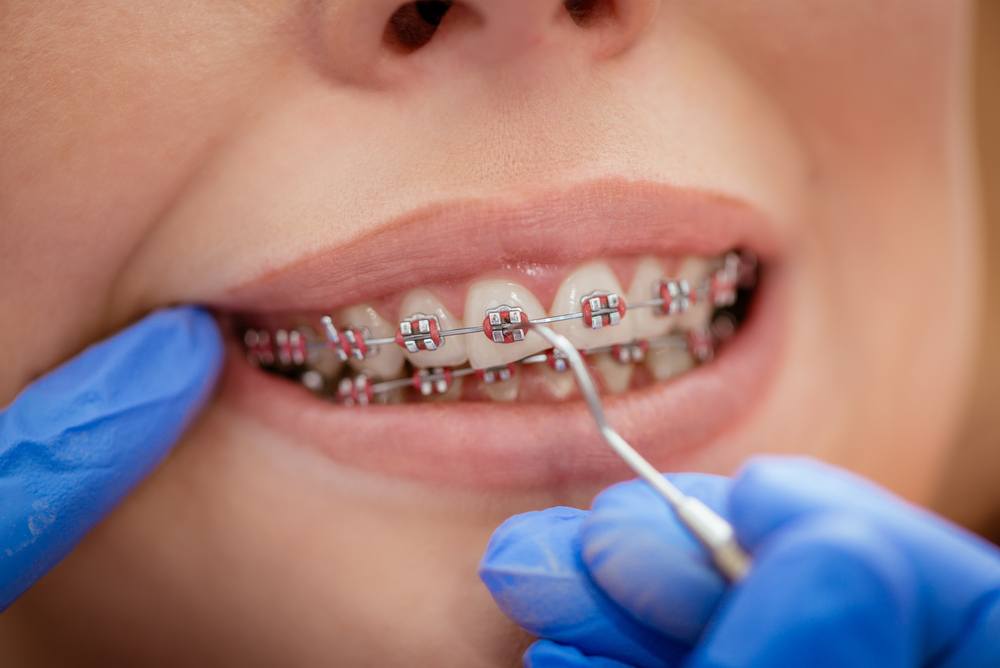Selecting the most effective Cumming Orthodontics for Effective Braces and Aligners Solutions
Selecting the most effective Cumming Orthodontics for Effective Braces and Aligners Solutions
Blog Article
Comprehensive Guide to Orthodontics Treatments for Remedying Oral Imbalances
In the world of orthodontics, the trip to accomplishing a completely lined up smile includes a myriad of procedures customized to deal with oral imbalances. From traditional dental braces to unnoticeable aligners and also medical choices, the area of orthodontics uses a series of services to deal with differing degrees of dental abnormalities. Recognizing the complexities of each procedure, including their devices, benefits, and possible drawbacks, is essential in making informed choices about one's orthodontic treatment. As we navigate through the extensive guide to orthodontic procedures for correcting dental imbalances, the intricate details of each approach will certainly unravel, clarifying the path towards a functional and harmonious dental placement.
Orthodontic Procedures Summary

In enhancement to conventional dental braces and clear aligners, orthodontists might likewise suggest other treatments like headgear, palatal expanders, or retainers to attend to certain positioning concerns (cumming invisalign). These treatments are tailored to every client's special needs and may involve a mix of therapies to accomplish the wanted results. Routine changes and surveillance are essential parts of orthodontic therapy to make sure progression is on track and to make any needed adjustments along the way. By undertaking orthodontic procedures, clients can not only accomplish a straighter smile but also improve their total oral health and function.
Standard Braces: Exactly How They Work
When thinking about orthodontic therapies for dental imbalances, typical braces stand out as a tried and true approach for remedying teeth placing. Traditional braces consist of braces, wires, and bands that work with each other to use continuous pressure on the teeth, slowly relocating them into the preferred placement.
As pressure is used to the teeth via the dental braces, the bone bordering the teeth is improved to support the new tooth settings. People will certainly need normal adjustments at the orthodontist's workplace to ensure the braces proceed to apply the correct pressure for reliable teeth activity.
Unnoticeable Aligners: Advantages And Disadvantages
These clear, personalized trays are practically unnoticeable when used, making them an attractive choice for people seeking a more cosmetically pleasing orthodontic therapy. Clients can eliminate the aligners before consuming or brushing their teeth, decreasing the risk of food obtaining stuck in the device and streamlining the cleaning procedure.

Surgical Orthodontic Options
Surgical interventions in orthodontics existing practical choices for dealing with complex oral imbalances that may not be effectively settled via standard orthodontic treatments. While standard braces and unnoticeable aligners can remedy many orthodontic issues, particular situations require medical treatment find this to achieve optimum results. Surgical orthodontic alternatives are generally advised for serious malocclusions, substantial jaw inconsistencies, and instances where the underlying bone structure requires alteration to accomplish proper placement.
One typical surgical orthodontic treatment is orthognathic surgical treatment, which entails rearranging the jaws to fix useful problems such as trouble eating or speaking. This surgical procedure is frequently carried out in cooperation with an orthodontist that aids align the teeth prior to and after the treatment. Surgical orthodontics might also entail procedures to expose influenced teeth, remove excess gum cells, or reshape the jawbone to produce an extra harmonious facial profile.
Prior to considering surgical orthodontic choices, individuals undertake an extensive examination to establish the necessity and possible benefits of such treatments. braces. While surgery may appear challenging, it can significantly boost both the feature and aesthetics of the smile in situations where traditional orthodontic therapies fall short
Retainers and Post-Treatment Care

Failure to comply with post-treatment care instructions can result in relapse, where the teeth progressively relocate back in the direction of their initial positions. Regular retainer wear, excellent dental health, and normal dental check-ups are necessary for keeping the outcomes achieved with orthodontic surgical treatment and making sure the long-term security of the fixed oral positioning.
Final Thought
To conclude, orthodontic treatments offer different choices for dealing with oral misalignments. Standard braces use metal brackets and cables to shift teeth into proper placement. Undetectable aligners supply a more discreet choice yet may not appropriate for all instances. Surgical orthodontic alternatives are offered for more severe misalignments. Retainers are typically made use of post-treatment to maintain the new positioning. Overall, orthodontic treatments can effectively boost dental wellness and aesthetic appearance.
As we browse via the extensive guide to orthodontic procedures for fixing dental imbalances, the detailed you could try this out details of each method will unravel, shedding light on the path toward a unified and practical dental placement. - cumming orthodontist
One of the most typical orthodontic treatments is the use of dental braces, which are composed of metal brackets and wires that apply gentle pressure to progressively move teeth right into the desired placement.When considering orthodontic therapies for dental misalignments, traditional braces stand out as a time-tested approach for remedying teeth placing. Additionally, unseen aligners might not be suitable for complicated orthodontic concerns that call for more significant teeth motion, as they are generally suggested for moderate to moderate instances. Retainers are customized orthodontic gadgets made to hold teeth in their dealt with positions after the completion of orthodontic treatment.
Report this page